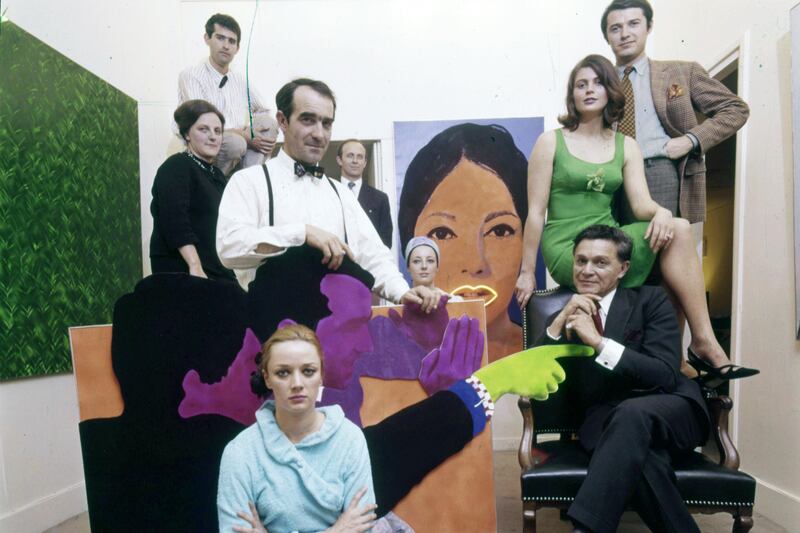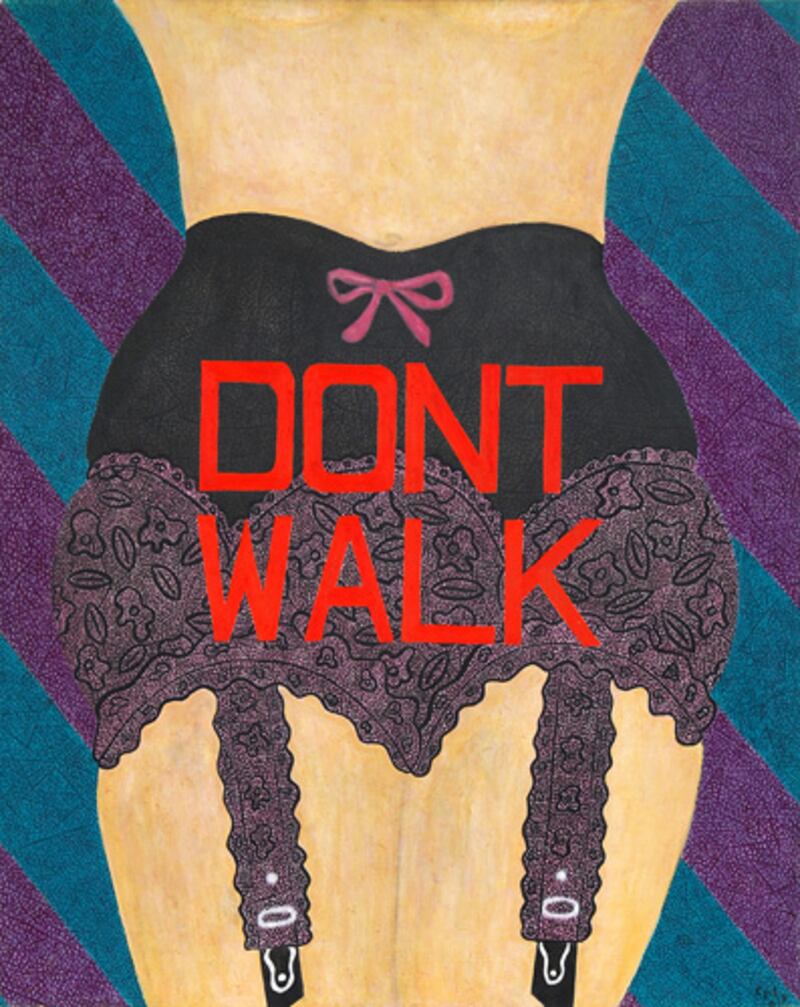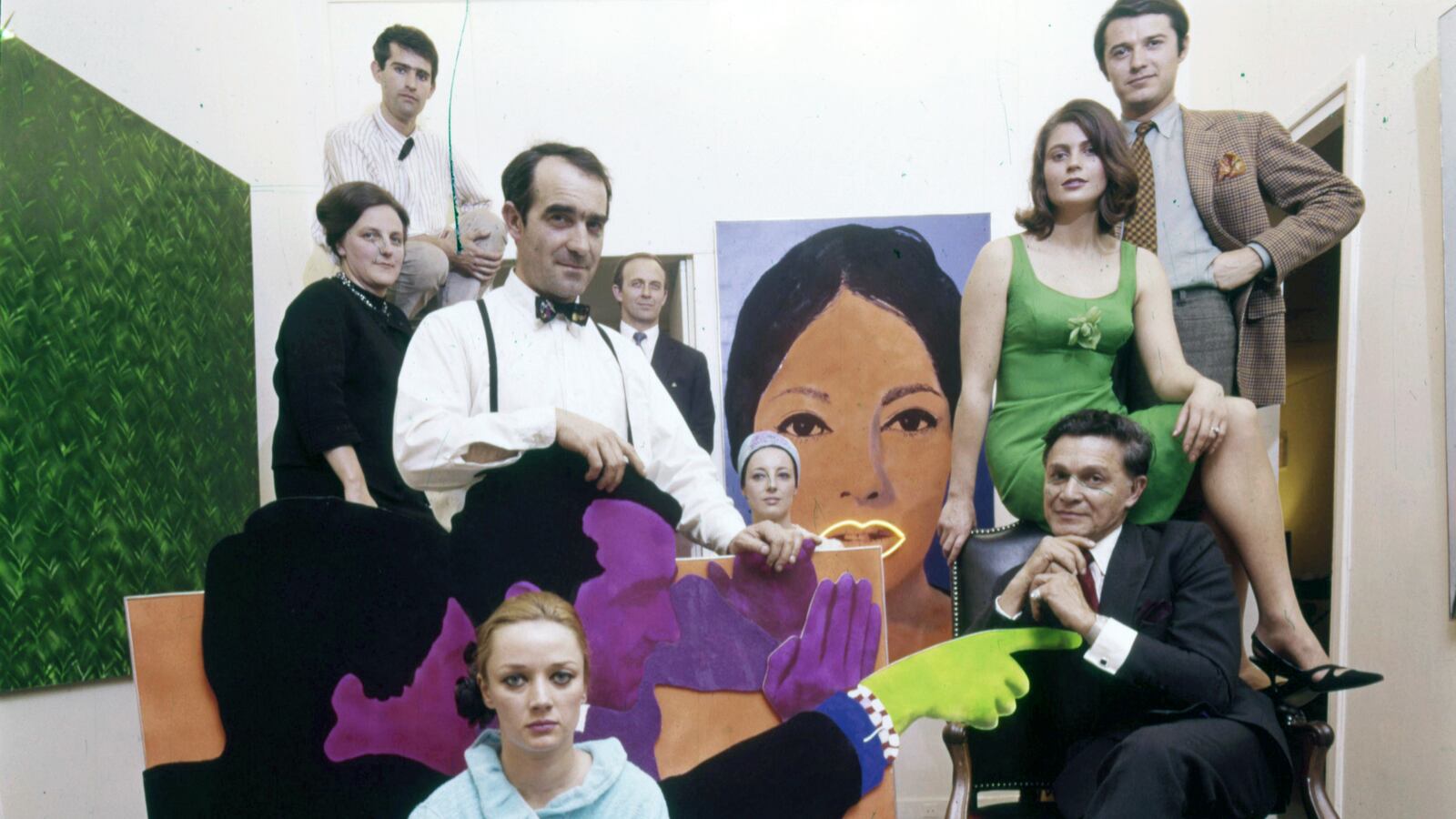
In the art world today, those who produce art aren’t the only ones who gain the world’s attention—dealers are just as praised and recognized as the artists that they foster. Larry Gagosian and Charles Saatchi, two of the biggest contemporary art dealers in the world, will always be remembered for the talent they discovered. It can similarly be said for Alfred Stieglitz at the beginning of the 20th century as well as Leo Castelli from the latter half. But one historic dealer somehow slipped through the cracks.
Alexander Iolas is described as a theatrical man with a fondness for fur coats and an extraordinary eye for talent. He was one of the most important art dealers of the twentieth century. Yet for the amount of historically significant artists that he was responsible for propelling to notoriety, he is almost all but forgotten.
“He was such an extraordinary person as well as a visionary dealer,” Vincent Fremont told The Daily Beast, “[I thought] why not have a show because so many people don’t know who he is anymore.” Fremont is the co-curator of a new exhibition, Alexander the Great: The Iolas Gallery 1955-1987. The show, at the Paul Kasmin Gallery in New York, highlights various works by artists from an array of movements including Surrealism, Minimalism and Pop that Iolas helped introduce to the world.
The list of artists that Iolas represented grew to a staggering amount throughout his three-decade career. “If you look at the list of artists that he showed,” Fremont stated, “they all changed the art of the 20th century.” Man Ray, Yves Klein, Max Ernst and Ed Ruscha—these are just a few of the monumental artists that Iolas cultivated and will be present in the exhibition with over a dozen more.

“Part of the pleasure of researching this present exhibition,” Adrian Dannatt, the exhibitions co-curator, writes in the show catalog, “was in discovering quite how many highly diverse artists had exhibited with Iolas. It really came to seem that everyone at some point had something to do with him.”
Born in Alexandria, Egypt, Iolas’s entirely Greek parents were successful traders in the cotton industry. Growing up, it was expected that Iolas would take over his fathers business, but the future art collected had other plans. After seeing Russian ballerina Anna Pavlova perform in Cairo, Iolas knew he wanted to be an artiste.
As a teenager, ‘Alexander the Great,’ as many called him, fled to Paris to learn ballet. His natural talent propelled his successful career as a dancer in both Europe and the Americas. “Iolas had already enjoyed fame and fortune,” Dannatt states, “already known adulation from packed paying audiences, already had his press-clippings and his souvenir programs, had already given out autographs and interviews, long before he opened a gallery.”
His introduction to the art world was almost haphazard. One day while walking home, a small painting displayed in the Four Paths gallery window on Rue Matignon caught his eye. After idly admiring the work for almost a week, Iolas gained the courage to enter his very first gallery. The painting was a di Chirico, as the owner informed him and, from that day on, they began to develop a relationship.
Soon enough, Iolas had saved enough money to purchase his first work of art—a small drawing by Cézanne, whom he would later meet. The people that he met through the gallery proved to be even more invaluable than what he learned.
It wasn’t long before he was introduced to René Magritte and Max Ernst, who were then relatively unknown artists. They quickly developed relationships and Iolas soon become their link the international scene. Surrealists, as they were known, depicted ordinary objects in an unconventional, dream-like manner, exploring the unconscious and creating vividly unique works.
Magritte’s Le Pelerin, one of the works on exhibit at the Paul Kasmin Gallery, for instance, takes the common subject of a portrait and reconstructs it in an eerie way. Large in size, the painting depicts a man dressed in a sharp suit and bowler cap, a style typical of Magritte himself. Yet, the suit is hollow and the cap hovers above it. The man’s head floats off to the left, removed from the body and suspended in air.
Many other talented artists were soon discovered for Iolas’ galleries all over the world. “There weren’t many gallerists at that point, beginning in the 60s,” Fremont said, “that had as big of an expansion as Iolas,” who had galleries in Athens, Milan, Geneva, Paris and New York.
In 1952, as director of the Hugo Gallery in New York, Iolas gave Pop artist Andy Warhol his first exhibition, a series titled Fifteen Drawings on the Writings of Truman Capote.” The two continued a close, long-standing relationship. “He knew how to get very close to most artists he showed,” Fremont described. “And he got very involved in them.”
Marina Karella was one of these artists. In the early seventies, while showing with Iolas, she began to produce white-on-white painting of fabric. Iolas was intrigued, but told her to make them three dimensional, which she did. The highly polished bronze sculpture of fabric draped over a chair, also in the exhibition, proved to be highly successful for the artist who has gone on to produce numerous sculptures using the same materials.

In 1986, Iolas commissioned Warhol for a show in Milan based on Leonardo da Vinci’s The Last Supper. More than a hundred paintings, both silkscreen and hand painted, some of which were Warhol’s largest works, were put on display. The exhibition took place at the Palazzo delle Stelline, located across the street from the church that holds Leonardo’s version, and unknowingly became Warhol’s final exhibition—he died four weeks later. Iolas passed shortly after from AIDS-related complications. He was 80 years old.
“In many ways, Iolas and Andy were two of a kind,” Bob Colacello, close friend and former editor of Interview magazine writes. “They shared a high camp sensibility, an awareness and delight in the absurdity of existence.”
A work from Warhol’s show in Milan can also be seen at the Paul Kasmin Gallery. The work presents a black-and-white silkscreened version of Leonardo’s original Last Supper. Warhol then added broad streaks of bright hues—blue, red, yellow, pink—across the top grouping the figures into their own colored columns, creating new narratives and individual stories.
“What is truly shocking,” Dannatt says, “is just how many people have never heard of Iolas at all, even in some of the more elite corners of the contemporary art world. [So] here he is once again, brought back into being, physically represented by the works that he helped create.”
Alexander the Great: The Iolas Gallery 1955-1987 will be on view at Paul Kasmin Gallery, 293 Tenth Avenue (at 27th Street), until April 26, 2014.






